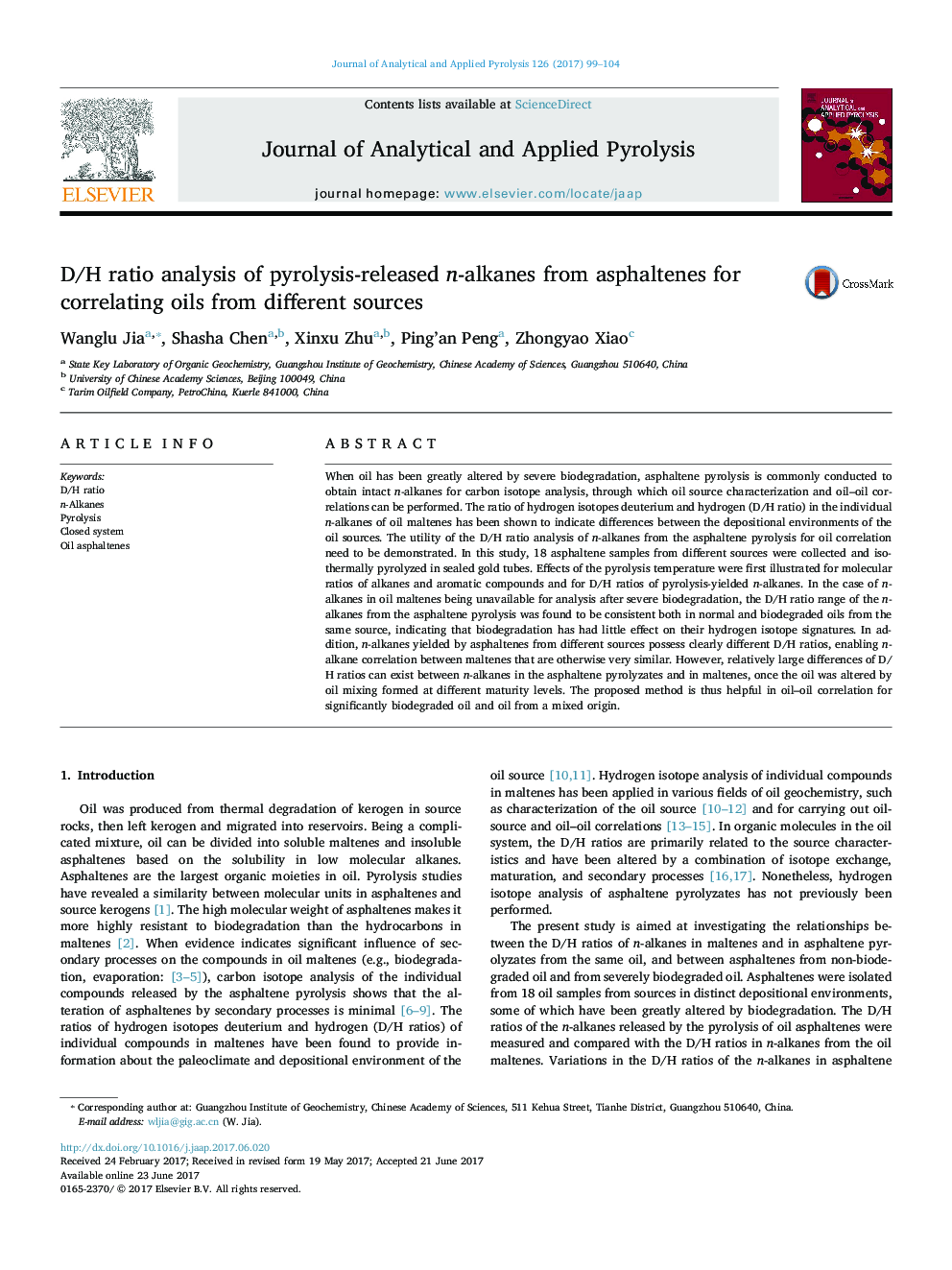| Article ID | Journal | Published Year | Pages | File Type |
|---|---|---|---|---|
| 5134662 | Journal of Analytical and Applied Pyrolysis | 2017 | 6 Pages |
â¢D/H ratios of n-alkanes in asphaltene pyrolyzates and maltenes of oil were compared.â¢Biodegradation alters little D/H ratios of n-alkanes in asphaltene pyrolyzates.â¢Asphaltenes from different sources yield n-alkanes showing distinct D/H ratios.
When oil has been greatly altered by severe biodegradation, asphaltene pyrolysis is commonly conducted to obtain intact n-alkanes for carbon isotope analysis, through which oil source characterization and oil-oil correlations can be performed. The ratio of hydrogen isotopes deuterium and hydrogen (D/H ratio) in the individual n-alkanes of oil maltenes has been shown to indicate differences between the depositional environments of the oil sources. The utility of the D/H ratio analysis of n-alkanes from the asphaltene pyrolysis for oil correlation need to be demonstrated. In this study, 18 asphaltene samples from different sources were collected and isothermally pyrolyzed in sealed gold tubes. Effects of the pyrolysis temperature were first illustrated for molecular ratios of alkanes and aromatic compounds and for D/H ratios of pyrolysis-yielded n-alkanes. In the case of n-alkanes in oil maltenes being unavailable for analysis after severe biodegradation, the D/H ratio range of the n-alkanes from the asphaltene pyrolysis was found to be consistent both in normal and biodegraded oils from the same source, indicating that biodegradation has had little effect on their hydrogen isotope signatures. In addition, n-alkanes yielded by asphaltenes from different sources possess clearly different D/H ratios, enabling n-alkane correlation between maltenes that are otherwise very similar. However, relatively large differences of D/H ratios can exist between n-alkanes in the asphaltene pyrolyzates and in maltenes, once the oil was altered by oil mixing formed at different maturity levels. The proposed method is thus helpful in oil-oil correlation for significantly biodegraded oil and oil from a mixed origin.
